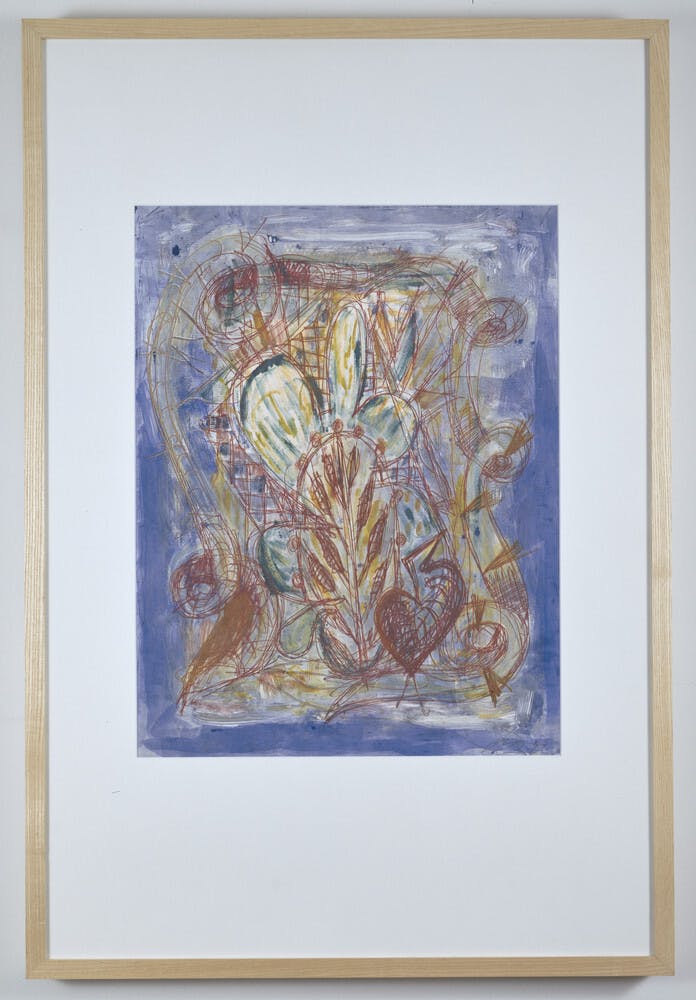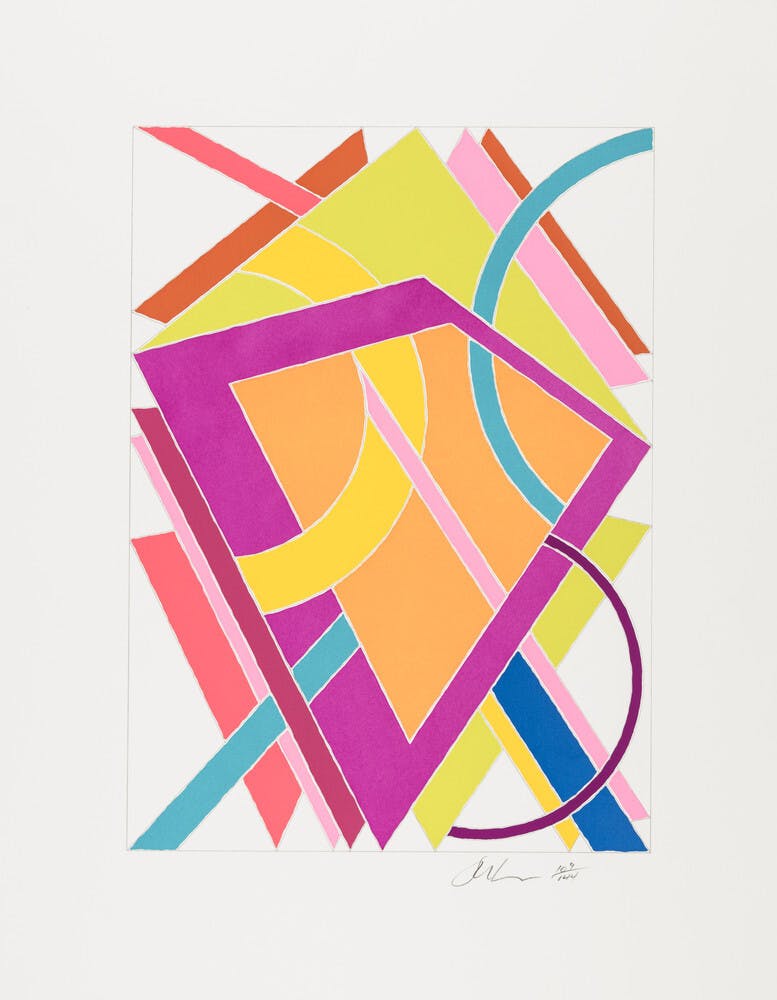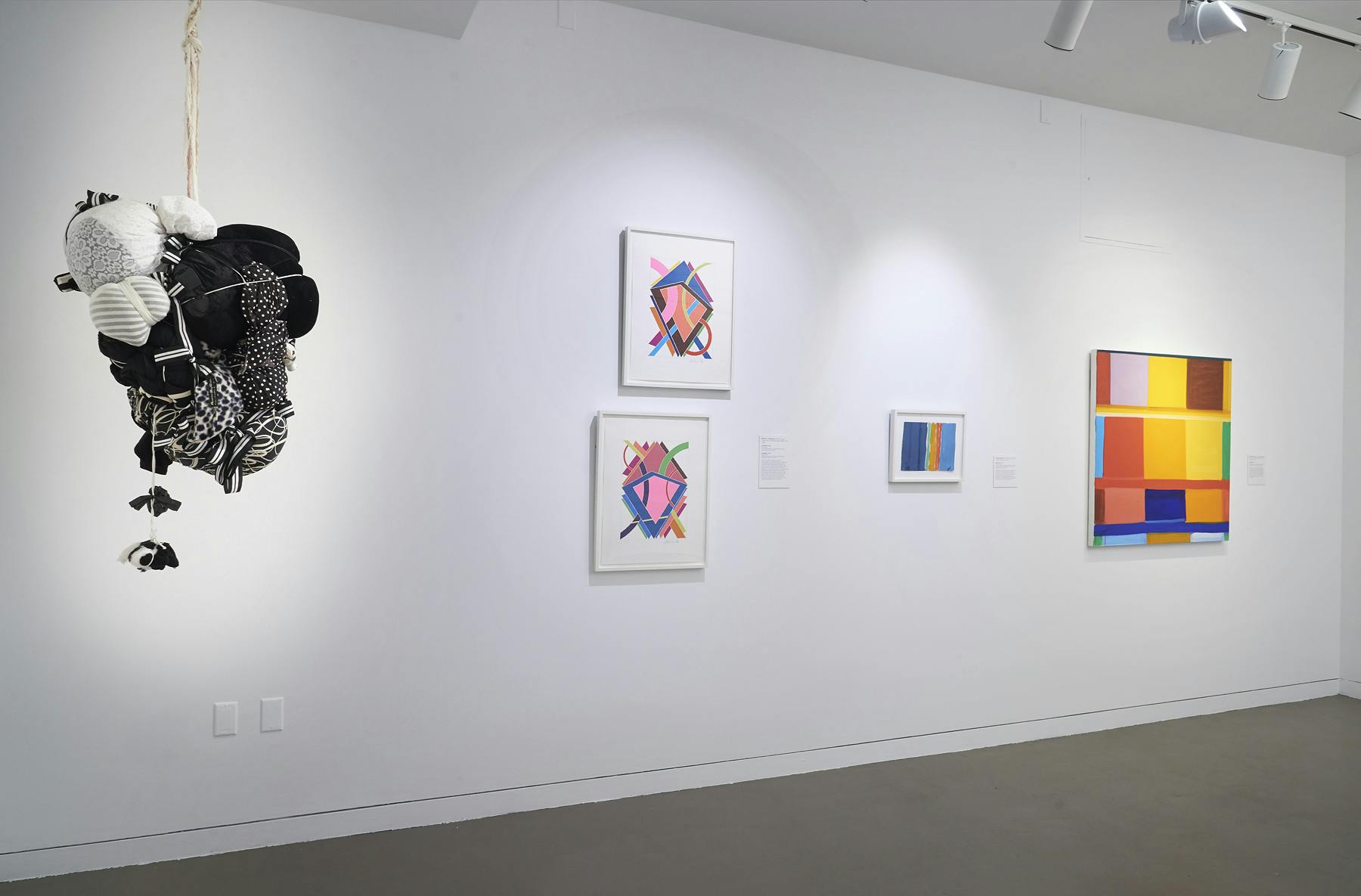William T. Williams
(b. 1942)William T. Williams expanded the possibilities of abstraction through architectural compositions and bold experiments with color and contrast.
Biography
One of the most significant abstractionists of his generation, William T. Williams expresses personal, political, and cultural narratives through intricate combinations of color and form.
He was born and raised in North Carolina, and moved to New York City with his family at age four. He took an early interest in the arts, attending Manhattan’s High School of Art and Design. In 1962, he enrolled at the Pratt Institute. Encouraged by semi-abstract painter Richard Bove, he began to think critically about the freedom and fluidity afforded by an abstract, nonrepresentational approach to artmaking. As an MFA student at Yale University, he expanded his studio practice under the guidance of Abstract Expressionist Al Held. Since then, Williams’s practice has been characterized by a process-based abstractionist approach that synthesizes personal memory and Black culture, such as jazz music and quilting.
After completing his MFA, Williams returned to New York in 1968. Not long after, the Studio Museum in Harlem, at that point an institution still in formation, adopted Williams’s proposal for an artist residency program he developed while at Yale. At the same time, Williams founded the Smokehouse Associates alongside Melvin Edwards, Guy Ciarcia, and Billy Rose. Over the following two years, Smokehouse completed several large-scale public works in Harlem. They engaged the neighborhood by taking input from community leaders and employing residents during the production of their “painted walls.” Williams’s commitment to community-driven work, particularly related to youth, extended to his teaching career at Brooklyn College and the Skowhegan School of Painting & Sculpture.
Williams earned his AA from New York Community College, BFA from the Pratt Institute, and MFA from Yale. He received the Individual Artist Award from the National Endowment for the Arts (1965, 1970, and 1994); the John Simon Guggenheim Fellowship (1987); and the Skowhegan Governors Award (2017). The Studio Museum presented his work in numerous exhibitions, including X to the Fourth Power (1969); William T. Williams: Works on Paper (1992); and Energy/Experimentation: Black Artists and Abstraction 1964–1980 (2006).
Exhibitions and Events
William T. Williams
(b. 1942)William T. Williams expanded the possibilities of abstraction through architectural compositions and bold experiments with color and contrast.
N.C. Call, 1997
Biography
One of the most significant abstractionists of his generation, William T. Williams expresses personal, political, and cultural narratives through intricate combinations of color and form.
He was born and raised in North Carolina, and moved to New York City with his family at age four. He took an early interest in the arts, attending Manhattan’s High School of Art and Design. In 1962, he enrolled at the Pratt Institute. Encouraged by semi-abstract painter Richard Bove, he began to think critically about the freedom and fluidity afforded by an abstract, nonrepresentational approach to artmaking. As an MFA student at Yale University, he expanded his studio practice under the guidance of Abstract Expressionist Al Held. Since then, Williams’s practice has been characterized by a process-based abstractionist approach that synthesizes personal memory and Black culture, such as jazz music and quilting.
After completing his MFA, Williams returned to New York in 1968. Not long after, the Studio Museum in Harlem, at that point an institution still in formation, adopted Williams’s proposal for an artist residency program he developed while at Yale. At the same time, Williams founded the Smokehouse Associates alongside Melvin Edwards, Guy Ciarcia, and Billy Rose. Over the following two years, Smokehouse completed several large-scale public works in Harlem. They engaged the neighborhood by taking input from community leaders and employing residents during the production of their “painted walls.” Williams’s commitment to community-driven work, particularly related to youth, extended to his teaching career at Brooklyn College and the Skowhegan School of Painting & Sculpture.
Williams earned his AA from New York Community College, BFA from the Pratt Institute, and MFA from Yale. He received the Individual Artist Award from the National Endowment for the Arts (1965, 1970, and 1994); the John Simon Guggenheim Fellowship (1987); and the Skowhegan Governors Award (2017). The Studio Museum presented his work in numerous exhibitions, including X to the Fourth Power (1969); William T. Williams: Works on Paper (1992); and Energy/Experimentation: Black Artists and Abstraction 1964–1980 (2006).






